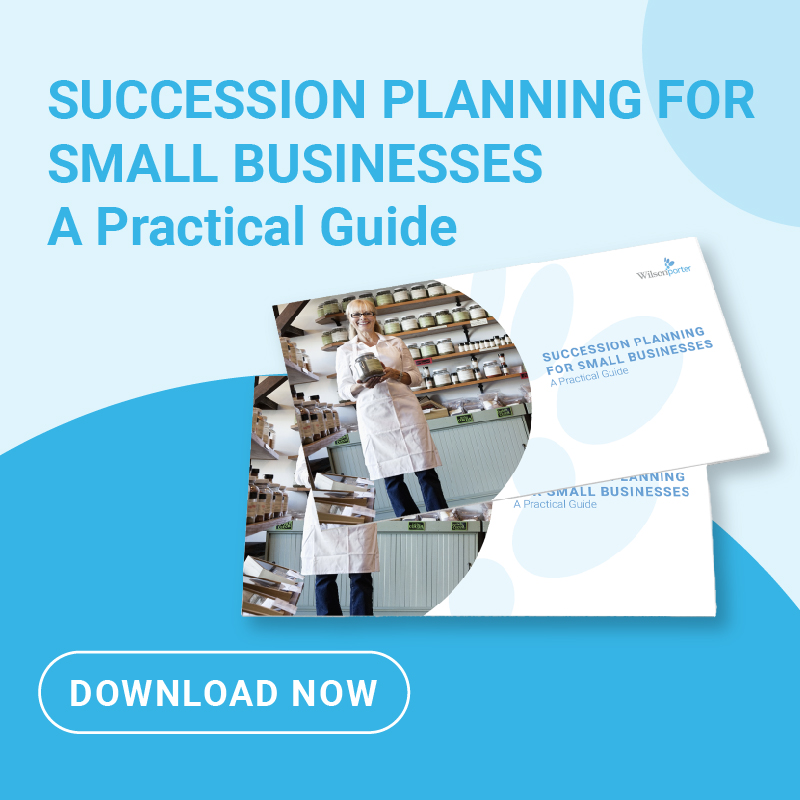
Strategic succession: A step-by-step guide to creating a succession plan
Have you considered what the future holds if your key leaders are suddenly absent? Succession planning transcends mere strategy and is a vital shield for continuity and resilience. This process is all about preparing for what’s ahead by pinpointing and nurturing potential successors for crucial roles. Without such a plan, you’re looking at potential uncertainty, disruption and a threat to sustainability.
Let’s explore the critical importance of having this roadmap and how to create one for your business.
The key components of a succession plan
Creating a successful succession plan requires attention to detail, an understanding of the organisation’s unique needs and meticulous tailoring. At the heart of effective succession planning are several key components:
Identifying critical roles: Determine which positions are vital to your operations and future success. Consider which roles, if left unfilled, would significantly disrupt your workflow.
Spotting potential successors: Evaluate which employees have the necessary potential, skills and ambition to assume leadership roles. This involves assessing beyond their current roles and envisioning their capability to lead.
Setting performance criteria: Define how you will assess the readiness of your potential successors. Use clear and objective criteria that align with your strategic goals and vision.
How to create a succession plan
Creating a succession plan may seem daunting at first, but with the proper guidance and tools, it’s both achievable and vital for your organisation’s long-term success and stability. Here’s a step-by-step guide to developing your plan:
Step 1: Analyse business needs and identify key positions
First things first, take a bird’s-eye view of your organisation. Which roles are critical to your daily operations and long-term success? Identifying these key positions is the cornerstone of effective succession planning. It’s about understanding where you are and where you’re headed.
Step 2: Pinpoint and assess potential successors
Now, who’s on deck? Look within your team for individuals who have the skills and the potential to grow into these critical roles. Remember, potential successors are often hidden gems, waiting for the right opportunity to shine.
Step 3: Develop training and development plans
Identifying potential is just the beginning. Crafting tailored development plans for your succession candidates ensures they’re ready and primed for leadership. This could mean targeted training, mentorship opportunities, or stretch assignments that push them out of their comfort zones.
Step 4: Implement succession strategies
With your successors in training, it’s time to put your plan into action. This means integrating your succession strategies into your broader business operations, ensuring a seamless transition when the time comes. It’s about making succession planning a living, breathing part of your organisational culture.
Step 5: Regularly review and update the plan
The only constant in business is change. Regularly revisiting and updating your succession plan ensures it remains aligned with your evolving business needs and the dynamic talent landscape. This step is crucial for keeping your plan relevant and effective.
For a deeper dive into this process, check out Wilson Porter’s advice on how to craft a succession plan. Our insights can help you navigate succession planning with confidence and foresight.
Legal and regulatory compliance
When it comes to succession planning, being well-versed in and compliant with legal obligations is essential. It’s not just a matter of formality but a critical aspect that ensures the process respects all employment laws and regulations.
Understanding these legal frameworks is crucial for several reasons:
- Ensuring compliance: Adhering to legal standards helps avoid potential legal issues arising from non-compliance. This includes understanding specific requirements related to employment contracts, labour laws and any industry-specific regulations that might affect the succession planning process.
- Protecting the organisation: By aligning your succession plan with legal requirements, you protect the organisation from potential lawsuits or penalties. This legal diligence safeguards the company’s reputation and financial health.
- Promoting fairness: Compliance with employment laws ensures that the succession planning process is fair and transparent. This fosters a positive workplace environment and reinforces the organisation’s commitment to ethical practices.
Communication and implementation strategies
The success of a succession plan is deeply rooted in how well it’s communicated and implemented across the organisation. To navigate these crucial stages effectively, consider the following approaches:
1. Clear messaging
Articulate the goals, procedures and expected results of the succession plan in a straightforward manner. Use various communication platforms such as meetings, newsletters and intranet postings to ensure the message reaches every corner of the organisation. This clarity helps in aligning everyone’s understanding and expectations regarding the plan.
2. Engage leadership
Actively involve the executive team and department heads in disseminating information about the succession plan. Their endorsement can significantly influence the wider team’s perception, highlighting the plan’s critical role in the organisation’s future. Leadership’s involvement can also serve as a model, encouraging other team members to take the succession planning process seriously.
3. Feedback channels
Create a structured process for gathering input from employees at all levels. This could involve surveys, suggestion boxes and dedicated discussion forums, both online and in-person. Providing a platform for open dialogue allows for the collection of valuable insights and suggestions, making employees feel valued and involved in the process. Addressing their concerns and incorporating feasible suggestions can greatly enhance the overall acceptance and effectiveness of the succession plan.
And, to ensure the smooth implementation of your succession plan, follow these best practices:
# Structured timeline: Create a clear timeline highlighting milestones and assigning specific responsibilities for the succession process, ensuring everyone knows their deadlines and tasks.
# Training programs: Launch focused training and development initiatives for successors, covering necessary skills and leadership qualities, including mentorship and cross-functional projects.
# Monitor progress: Set up regular checks to assess the plan’s effectiveness and successors’ readiness, adjusting the plan as needed based on performance feedback and organisational changes.
# Successor engagement: Involve your potential successor early, discussing their career goals and role expectations to build commitment.
# Communication strategy: Keep stakeholders updated with regular, clear communications about the plan’s progress and outcomes to maintain transparency and alignment.
 The earlier you start planning business succession, the better it is for continuity.
The earlier you start planning business succession, the better it is for continuity.FAQ
Q: How do you initiate an effective succession planning process?
A: Start by pinpointing critical positions and identifying high-potential employees as potential successors. Then, craft a detailed transition strategy that includes development opportunities for these candidates.
Q: Can you outline the essential steps in the succession planning strategy?
A: The strategy unfolds in five key steps:
- Cataloguing key leader and future role requirements.
- Evaluating potential leader and succession candidate readiness.
- Structuring comprehensive training and leadership development plans.
- Applying succession planning tools and strategies for smooth transitions.
- Conducting ongoing reviews to refine and adapt the plan to new insights and organisational shifts.
Q: How can a succession plan mirror an organisation’s strategic objectives and vision?
A: Ensuring the plan identifies potential successors for leadership positions and aligns their development with the organisation’s future goals, thus moulding leaders that resonate with the company’s core values and vision.
Q: What risks does an organisation face without a formal succession plan?
A: The absence of a plan can create significant vulnerabilities, including the risk of encountering talent and leadership voids, potential disruptions in operations and a threat to the seamless continuation of business practices.
Q: What’s the blueprint for crafting a succession plan in a small enterprise?
A: Small businesses should recognise indispensable roles and match them with appropriate potential successors. The plan should be customised to fit the unique dynamics and scale of the business, ensuring leadership continuity without overburdening resources.
Q: What methodologies are most effective for nurturing future leaders?
A: Among the best approaches are engaging potential successors in mentorship programs, providing targeted leadership and skill development training, and offering practical experience through involvement in various critical roles and projects.
Q: How does succession planning contribute to employee engagement?
A: Organisations can significantly boost employee morale, engagement and loyalty by actively involving employees in the succession planning process and offering clear paths for career advancement.
Key takeaways
Succession planning is necessary to ensure your organisation’s longevity and success. Taking proactive steps today can safeguard your business’s future, maintain continuity and foster growth. Whether you’re a large corporation or a small business, the time to start planning is now.
Ready to start your business succession planning? Wilson Porter is here to support you in getting your business’s finances in order.



 Are you keeping up with the modern consumer?
Are you keeping up with the modern consumer? How to revive your business when you hit a rough patch
How to revive your business when you hit a rough patch Keep track of your spending and earning with cash flow statements
Keep track of your spending and earning with cash flow statements